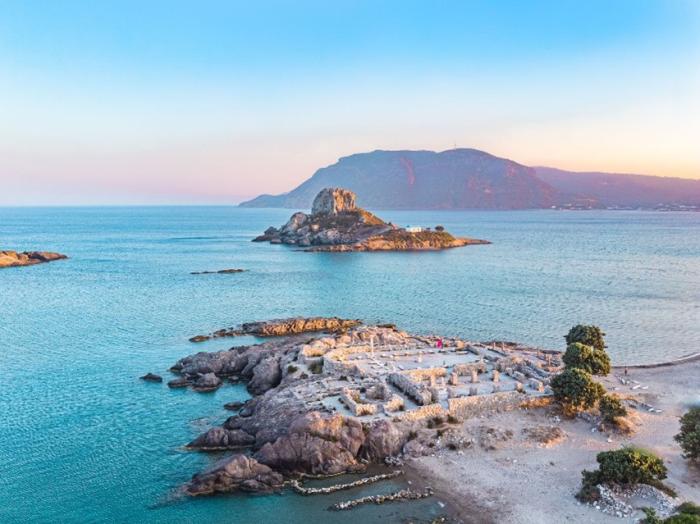
Island facts
Kos belongs to the non-interconnected electrical system of Kos-Kalymnos. Kos-Kalymnos electrical system consists of Kos, Kalymnos, Pserimos, Gyali, Leros, Lipsoi, Telendos, Nisiros and Tilos islands, and they are interconnected at medium voltage. Kos is interconnected with Kalymnos with a total of four submarine cables (2 cables 3x150 Al, 2 cables 3x95 Cu) at 20 kV rated voltage. In addition, Kos is interconnected with Pserimos by two submarine cables (3x35 Al, 20 kV) and with Gyali by two submarine cables (3x35 Cu, 20 kV).
Kos Island is located in the South Aegean Sea, near Turkey's western coasts. It is the third-largest island in the Dodecanese, covering 290 square kilometres and with a coastline of 112 kilometres. It borders Kalymnos to the north, Nisyros to the south, Turkey to the east, and Astypalaia to the west. The island is 200 nautical miles from Piraeus and has the second-largest population in the Dodecanese, after Rhodes.
The electricity demand of the Kos-Kalymnos electrical system in 2023 was around 360 GWh. The electricity production of the hall Kos-Kalymnos electrical system in 2023 was around 402 GWh, and the RES penetration was around 12.6%. The energy consumption for heating, cooling, and water heating in Kos island is estimated as 165 GWh/year. The consumption in the transport sector of Kos is estimated as 140 GWh.
In the framework of the Follower Islands programme, we aim to advance the energy transition of Kos by developing a sustainable, resilient, and autonomous energy system. This system will not only meet the current and future needs of the local population but also support economic growth and minimize environmental impact. By participating in the programme, we strive to enhance Kos’s energy independence and contribute to a greener, more sustainable future for the island.
